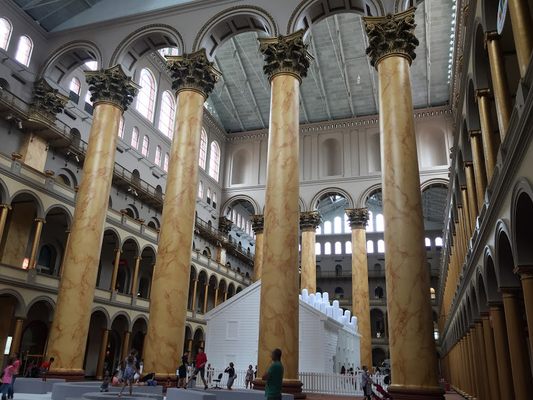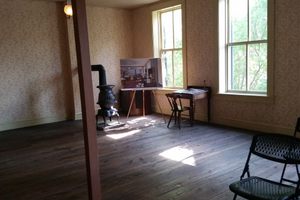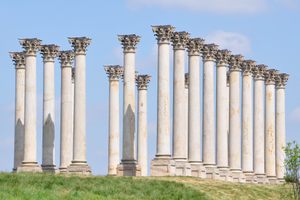About
The enormous brick structure that now houses the National Building Museum in Washington, D.C., was originally constructed after the Civil War to house the Pension Bureau. A force of 1,500 clerks used the magnificent space to sort through the mountain of paperwork associated with the 890,000 pension claims from veterans of the Union Army.
Pensions were a very big deal after the war; they made up almost a third of the government budget in the 1880s, and half of the legislation in the 49th congress was special pension acts. The building's architect, Montgomery Meigs, a veteran of the Civil War who served as quartermaster general, conceived of the structure as both a hall of records and a memorial to the conflict.
Congress stipulated that Meigs was to use brick and metal, fireproof materials that would keep veterans' records safe more economically than carved stone. The scale of the building project resulted in a region-wide shortage of bricklayers during the summer of 1883. Meigs brought in skilled workers from cities across the north and got local home builders to delay their projects until the Pension Building was completed.
The Italian Renaissance Revival architecture was a sharp departure from the neoclassical marble norms that had previously dominated government buildings. The building's interior features massive 75-foot-tall Corinthian columns, some of the largest interior columns in the world. On the red brick exterior is a glorious 1,200-foot terra cotta frieze depicting Union soldiers.
Today we can draw a parallel between its style and that of the smaller brick marketplaces that used to dot Washington. Interestingly, "Meigs' red barn" drew sharp criticism when it opened, with General Philip Sheridan famously complaining that it was "too bad the damn thing is fireproof." The Washington Post reported that Rep. Dunham called the building an "architectural monstrosity" and Rep. Rogers called it "a cross between a horse-car stable and a union depot." Rep. Springer declared that "it was offensive to the vision, and ... the present ornamentation should be blown up with dynamite."
However, not everyone was against it. Senator McMillan and the powerful Speaker of the House Joe Cannon praised the offices as comfortable, well ventilated, and "better adapted to its purpose than any public building in Washington."
The building's interior design did have several clever features. The office galleries were laid out in arcades around a massive central atrium. This allowed the hot summer air to rise up to the top, where ventilating fans expelled it through the roof. The offices also have unusually high ceilings that contributed to this cycle.
Figuring that thousands of disabled veterans would have to climb the stairs between floors, Meigs built gently sloping steps with unusually wide treads and short risers. This early attempt at accessibility predated the Americans with Disabilities Act by a century and a half.
The crush of paperwork that moved around the building each day also necessitated a novel technological solution. Meigs built a special document-moving system that whisked baskets around on rails that ran the perimeter of each floor. The original rails are still visible today on the third floor. A separate dumbwaiter system could lift papers up and down vertically.
The Pension Bureau eventually became the Department of Veterans Affairs, which relocated to new offices in 1930. The building then passed to the General Accounting Office, which occupied it until 1950. The GAO remodeled the space and converted the ground floor into glass-ceilinged cubicles.
By the 1960s, the building was in a state of disrepair, and Congress considered demolishing it. The influential DC architect Chloethiel Woodard Smith proposed establishing an architectural museum. In 1980 Congress took up the idea and created the National Building Museum, which stands today, fittingly dedicated to the history and impact of the world’s architecture, engineering, construction, and design.
Related Tags
Know Before You Go
It's free to enter the Great Hall and take a building tour. There's a small fee for visiting the Museum's exhibits.
Published
April 26, 2017
































































